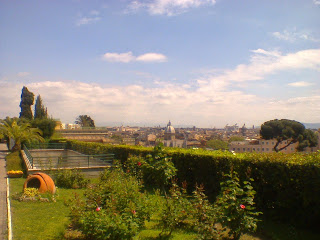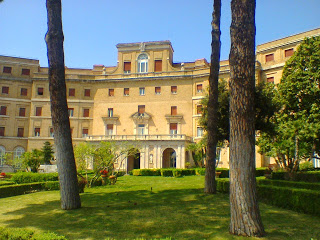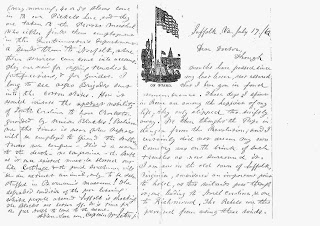| Online: | |
| Visits: | |
| Stories: |

| Story Views | |
| Now: | |
| Last Hour: | |
| Last 24 Hours: | |
| Total: | |
Roman Sources for the History of American Catholicism: A New Perspective
[This month Cushwa welcomes Matteo Binasco, who has been working as a postdoctoral fellow based in Rome since September 2014. He holds a PhD from the National University of Ireland in Galway, and his research focuses on missionary expansion within the Atlantic area; Irish communities within the Italian peninsula; and Irish communities in the Caribbean during the early modern period. Matteo recently helped to organize a symposium in Rome on Roman Sources for the Study of Global Irish Catholicism. His primary project for Cushwa, however, has been the massive task of compiling a guide for English-speaking historians to the many archives of Rome, including those of religious orders and Vatican congregations, which can shed light on the history of American Catholicism and indeed, as with the example he gives of a letter from a Union officer, on American history in general.]
Matteo Binasco
Since September 2014 I have been involved in a new exciting research project, supervised by Professor Kathleen Sprows Cummings in cooperation with Professor Luca Codignola and Professor Matteo Sanfilippo, which aims to prepare a guide to Roman archival sources related to the history of American Catholicism for the period from 1763 until 1939.
 |
| View of Rome, taken just outside the Archives of Propaganda Fide |
This project follows a path which was first laid out almost a century ago. In 1911, American historian Carl Russell Fish set the agenda by publishing his Guide to the Materials for American History in Roman and Other Italian Archives. His Guide was a remarkable work which was completed within a very short time. In its broad geographical scope Fish included all documents related to North America, the Caribbean, and the northern part of Mexico.
Fish's Guide opened a research path that, since the mid-1960s, has been progressively expanded thanks to the research carried out by a series of American, Canadian, and Italian historians who have worked in the main religious archives of Rome, namely the Vatican Secret Archives and the archives of the Sacred Congregation “de Propaganda Fide.” The latter was the Roman ministry founded in 1622 to oversee missionary activity in Protestant and non-Christian regions. These investigations resulted in the publication of articles, books, and essays, but also guides, among which L'Amérique du Nord française dans les archives religieuses de Rome, published in 1999, stands out.[1] This guide, which covers the years from 1600 to 1922, provides the best overview of the Roman sources for the history of the Catholic church in Canada to date and includes a number of items of interest for US historians.
 |
| Urban College of Propaganda Fide, near archives |
Given the large number of archives which are in Rome and which I had to opportunity to visit during this year, it is rather difficult to emphasize which depository is more important rather than another. However, I would like to emphasize the wealth of material for the history of American Catholicism contained in the “minor” archives. By “minor” I mean archives which have been overlooked by the majority of the historians who instead have devoted their attention to the Vatican Secret Archives or to the Archives of Propaganda.
 |
| Letter from Capt. Henry Seton to Dom Bernard Smith, 1862 |
The archives of St. Paul Outside the Walls also contain a bundle of letters written by Paolo Marella, an Italian cleric who worked as auditor at the apostolic delegation of Washington during the years from 1922 to 1933. One of his letter provides a very funny perspective that the Italian people had on the Americans during that period. Indeed, in a letter dated March 1922, Marella stated: “[I]t is full of Protestants of any sect. When I see the boys on the street I pity to think that the great majority of them are heretic,” and, “there is no noise as in Rome; cars rarely honk the horn, the traffic is regulated by the police.” (Researchers will have a chance to verify whether Marella's commentaries still apply to today’s Rome!) [3]
Other interesting material has been found in the archives of the Capuchins. These contain information on the history of the American provinces from the mid-nineteenth century to the early decades of the twentieth century. Beyond the traditional requests for financial support or permissions to found new convents, the documentation offers an insight into the impact of the Capuchins' activity among the American people. Of particular interest is a letter that, in 1917, James Malone, the Senator from Kansas, sent to Rome on the issue of the Capuchins' whiskers. Malone recounted that the Capuchins were seldom recognized or invited to participate in the public functions of the communities. According to him, the only reason for this was their beards, because “the appendage on their face, which the people refer to as hairy entanglements, are repulsive to the American idea of appearance.”[4]
Given the impressive amount of material which is in Rome, I could offer many more examples in order to emphasize how the “Roman” perspective is an essential avenue for understanding the transnational dimension of American Catholicism. At present I am completing my research on the archives and, at the same time, I am drafting the descriptions of the depositories examined. We intend for this guide to simplify access for historians to the archives of Rome, which will hopefully enrich the challenging and stimulating field of American Catholic Studies. Beyond being a new research tool, this guide might be used as platform for developing new projects in other areas, periods, and themes in Catholic history, thus demonstrating the global dimension of the material which is preserved in the “Eternal City.”
[1] Pierre Hurtubise, Luca Codignola, and Fernand Harvey eds., L'Amérique du Nord française dans les archives religieuses de Rome, 1600-1922 (Québec: Les Éditions de l'IQRC, 1999).
[2] Letter of Captain Henry Seton to Bernard Smith, 17 July 1862, Suffolk, Archivio Storico di s. Paolo [thereafter ASSP], serie Monaci dell'Ottocento, shelf no. 27, palchetto c, Smith II, 1862-1876, not foliated nor paginated.
[3] Paolo Marella to ?, March 1922, ASSP, shelf no. 19, palchetto c, Miscellanea, “E’ pieno di Protestanti di ogni setta. Quando vedo i ragazzi per le strade mi fa pena il pensare che gran parte di essi sono eretici. Non c’è qui il chiasso di Roma: gli automobili non suonano la tromba che raramente: il traffico è regolato dai poliziotti.”
[4] Letter of John Malone, senator of Kansas, to the Capuchins' Minister General, Herndon, Kansas, 16 August 1917, Archivio Generale dei Frati Minori Cappuccini, series G97, Provincia Pennsylvanica, Sectio XIII, not foliated nor paginated.
A Group Blog on American Religious History and Culture
Source: http://usreligion.blogspot.com/2015/05/roman-sources-for-history-of-american.html



